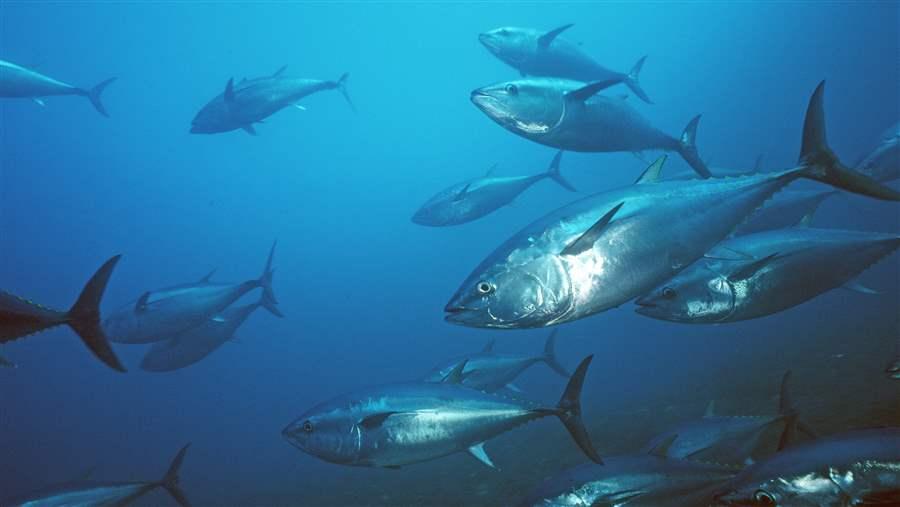No Action Taken to Save Pacific Bluefin
Managers fail to make science-based decisions to help depleted stock recover
 Richard Herrmann
Richard HerrmannPacific bluefin swim in the ocean.
The highly depleted population of Pacific bluefin tuna is one step closer to collapse after a meeting of fishery managers in Sapporo, Japan, concluded without agreement on any new conservation measures. Decimated by nearly a century of overfishing, the bluefin population has fallen 96 percent from unfished levels—and the numbers will continue to drop.
At the meeting that ended Sept. 3, the Northern Committee of the Western and Central Pacific Fisheries Commission (WCPFC) made no progress on either short-term steps to start the population’s recovery or longer-term measures to rebuild the species to healthy levels. The WCPFC’s Northern Committee is made up of the 10 governments responsible for sustainably managing Pacific bluefin.
Members could not even agree to ask scientists to evaluate the effects of stricter management on the future health of the population.
What’s even more concerning is that this lack of action follows the release of an analysis by Japan’s National Research Institute of Far Seas Fisheries concluding that the size of the Pacific bluefin stock will continue to decline through 2018—even with full implementation of existing conservation measures. The analysis also finds that over the next decade, there is a 1 in 3 chance that the Pacific bluefin population will fall to its lowest level ever recorded.
It is troubling that, even before the meeting started, Japanese government representatives indicated that they did not support a strong rebuilding plan for Pacific bluefin. That nation’s fishermen have the most to gain from a bluefin rebound and the most to lose if the population of this valuable species collapses.
According to an Associated Press report, the Japan Fisheries Agency blamed the dearth of progress on the lack of a quorum at the meeting. Although four out of 10 members were absent, plenty of discussion took place during the week. Each time a science-based idea was put forward, however, it was just as quickly taken off the table. Any decisions were pushed to 2016.
In reality, the hopes for reaching an agreement weren’t doomed by want of quorum, but by insufficient cooperation to act to rebuild the health of the species.
Fortunately, countries don’t have to wait until next year to begin implementing conservation measures. Japan can take serious steps to save Pacific bluefin on its own by acting to reduce mortality in its waters. That is where the vast majority of fishing for Pacific bluefin now occurs, including a high catch of juvenile fish that have not had the chance to reproduce and help boost the population.
The whole process of trying to save this species is reminiscent of the plight of Atlantic bluefin tuna, which was estimated to be at 15 to 20 percent of unfished levels when parties to the Convention on International Trade in Endangered Species of Wild Fauna and Flora considered a global trade ban in 2010. Currently, the Pacific bluefin tuna population is at just 4.6 percent of its historic high.
As with Atlantic bluefin, the path toward sustainable management of its Pacific cousin is clear. Today, eastern Atlantic and Mediterranean bluefin are showing signs of growth in response to sharp catch reductions following the 2010 trade ban threat, but members of the Northern Committee have so far proved unwilling to act to get the job done in the Pacific. Because managers again did not agree on needed protections, the international community may be forced to look at a global trade ban to help save this species.
The good news is that these are highly productive fish, spawning millions of eggs a year. If afforded additional protections soon, Pacific bluefin and the fisheries that depend on them could recover relatively quickly.
Amanda Nickson directs Pew’s global tuna conservation efforts.











